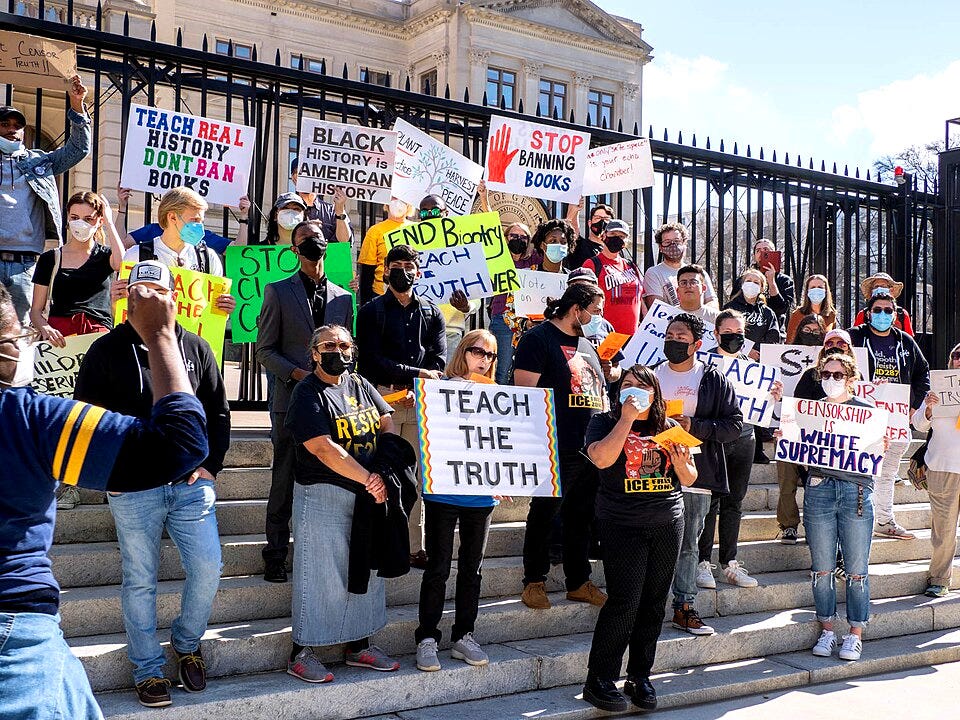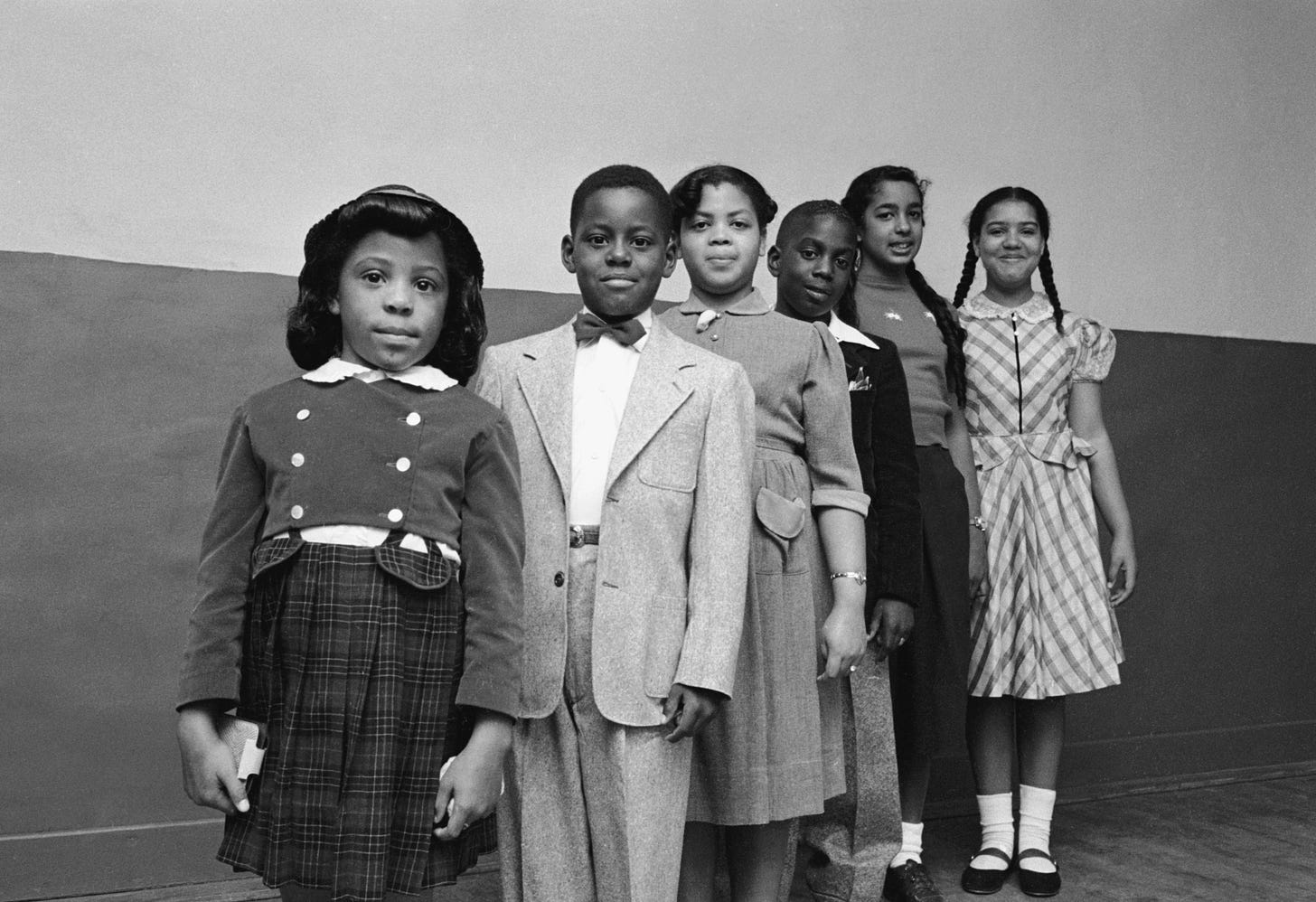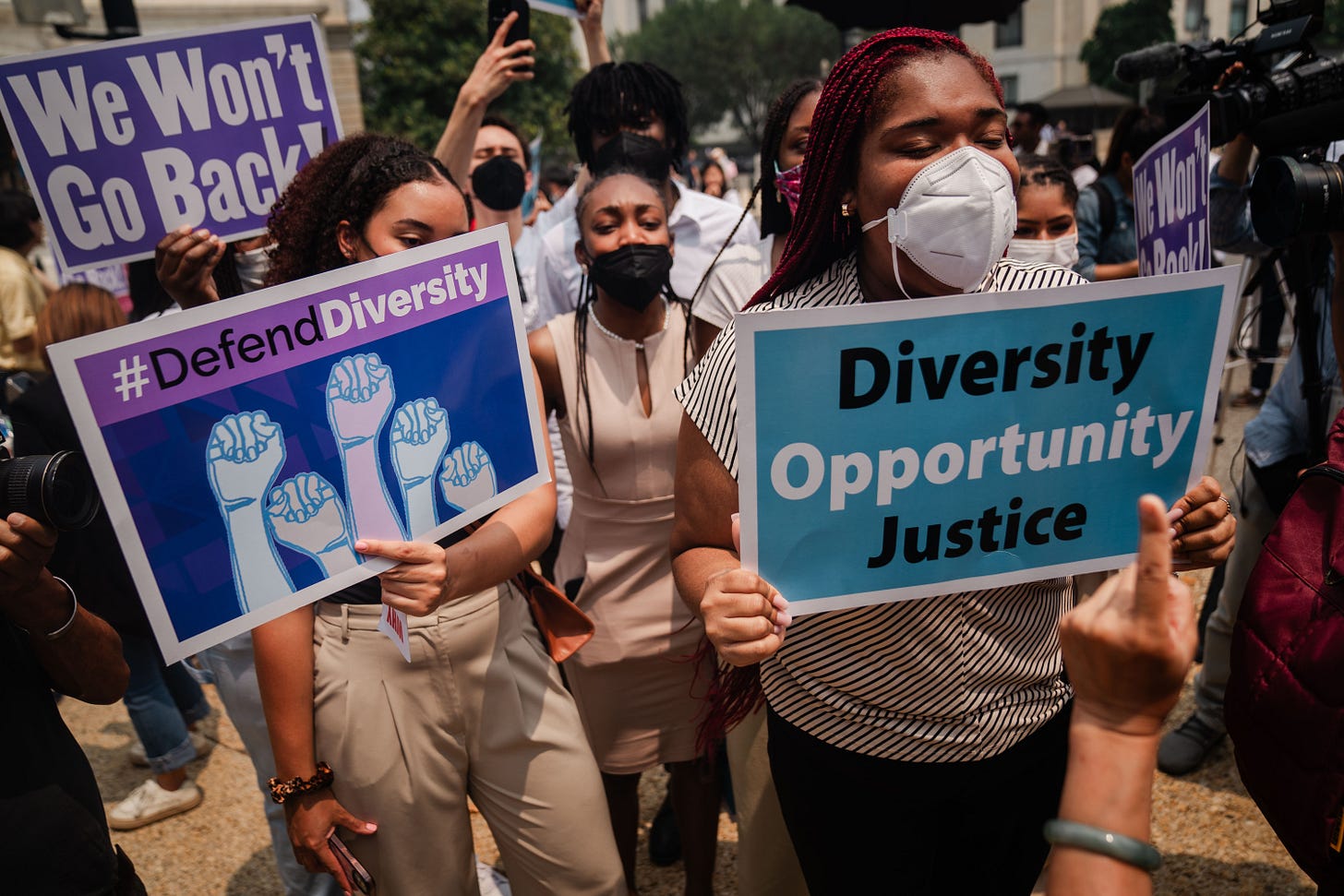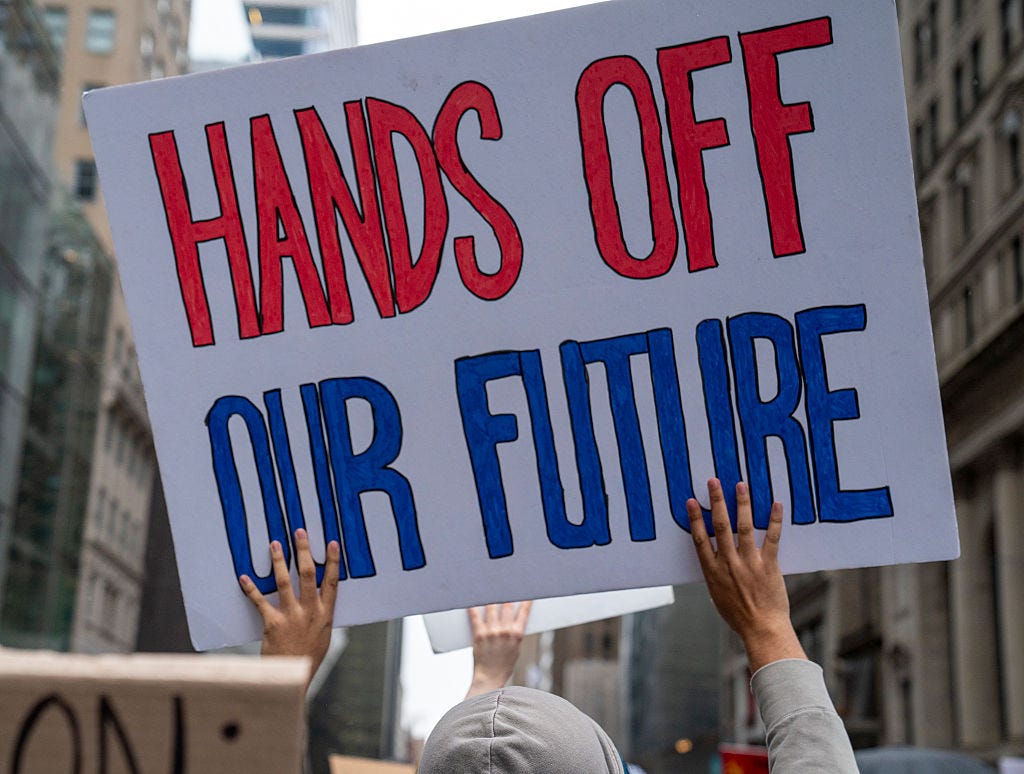In 1956, more than two years after the Supreme Court issued its landmark ruling in Brown v. Board of Education, Dr. Martin Luther King, Jr. delivered a momentous speech. While he emphasized that “old man segregation [was] on his deathbed” thanks to Brown, he urged caution. “History has proven that social systems have a great last-minute breathing power and the guardians of the status quo are always on hand with their oxygen tents to keep the old order alive.”
The massive resistance against Brown that plagued the South and that Dr. King described as “open defiance" did indeed challenge the promise of newfound potential for America’s future. Massive resistance, marked by Southern white political leaders who condemned Brown and vowed to defy it, came with violence, danger, and lasting repercussions for Black communities.
As Dr. King noted during his speech, questions of what would lie ahead in the wake of the decision were already on the minds of Black communities: “How will we proceed to bring about a desegregated society in the future? ... What can we do to speed up the process of integration and make this whole move toward a desegregated society a final reality? What must we do to make it a reality in the future?”

Just as Black communities grappled with these questions then, uncertainties about how public education may truly serve students still hold today. The backlash against Brown continued and simply evolved into new, subversive forms — decades of strategic resistance aimed at delaying and denying change. As a result, Brown’s promise was never fully realized. Indeed, we see this firsthand in the systemic challenges that public schools face as they navigate being underfunded, under-resourced, and more segregated than ever before.
For example, a recent ProPublica investigation found that millions of taxpayer dollars throughout the South are being funneled into “segregation academies,” and federal and state efforts to increase funding for private schools in the name of “school choice" threaten to exacerbate these already persistent inequities. Data shows that school segregation is increasing, and that many school districts never desegregated at all.

Renewed efforts to undermine equality in education — including book bans, attacks on inclusive curriculum, and the rollback of programs that advance diversity, equity, inclusion, and accessibility — have also gained sizeable traction in the last few years. Public schools face teacher shortages and inequitable resources, and Black students still face huge barriers to receiving an equal education, including enduring more school discipline and less access to quality instruction and support for college and other post-secondary opportunities.
Some may wonder, then, how much weight Brown carries today if it has not fully achieved its promise. But the truth is more complicated — and more urgent: Brown still matters precisely because we haven’t fulfilled it. Today, true equality in education remains unfinished business, but achieving it for current and future generations is critical. Brown exemplified a pivotal call to demand from our nation’s leadership what had so long been denied — and, more than 70 years later, it continues to serve as a call to action. We cannot ignore the crucial work it began, and we cannot break away from its promise.
The Transformative Power of Brown and Its Continued Importance
When the Supreme Court issued the unanimous Brown decision 71 years ago, it fundamentally reshaped the nation’s future. The decision declared racial segregation in public schools unconstitutional and set the stage for dismantling state-sanctioned legal apartheid in the United States. The visionary legal minds behind the case — including the Legal Defense Fund’s Thurgood Marshall, Constance Baker Motley, Jack Greenberg, and others — sought not just to overturn the “separate but equal” doctrine put forth in Plessy v. Ferguson, but to forge a transformative vision for an America where equal protection under the law applied to every child.

Their efforts represented the hopes and aspirations of Black families who dreamed of their children being afforded the elusive yet essential opportunity to pursue their educations fully and fairly without fear of discrimination, exclusion, or peril. These dreams sprang into action across the nation, best portrayed through the many stories of plaintiffs who filed the culminating lawsuits that became consolidated into Brown.
There was Ethel Belton in Delaware, who had to travel two hours across the state each day to attend an all-Black school while dreaming of one day attending her all-white neighborhood school. Harry Briggs Jr. in South Carolina, whose parents were fired from their jobs after signing a petition to challenge the unnerving system that forced him to walk up to 10 miles each way to attend a segregated school. Brown acted as a catalyst for change, expanding the realm of possibilities and galvanizing further civil rights litigation and grassroots organizing across the country. And Barbara Johns of Prince Edward County, Virginia, who in 1951 led a student walkout to protest the hazardous, dilapidated conditions of her segregated, all-Black high school. She later said, “It felt like reaching for the moon.”
These visions live on today, bolstered by decades of determination and progress. Critically, though, the Brown decision was never meant or expected to be an instant or effortless resolution. Its intent was always to lay the foundation for so much more.

The Brown decision’s legal implications, and its legacy as a whole, is a pillar of importance. Brown set critical legal precedent and paved the way for civil rights laws that protect not just students, but every American. Its rationale — rooted in equal protection under the law — has been a direct catalyst for vindicating the rights of all, including women, people with disabilities, immigrants, and LGBTQ+ Americans. Brown laid the foundation for the passage of the Civil Rights Act of 1964, the Voting Rights Act of 1965, and other anti-discrimination laws. Brown also set the stage for pursuing equal opportunity within schools, including the fight for inclusive curricula and equitable public school funding.
In short, ‘Brown’ planted countless seeds for achieving racial justice and equality — many of which have bloomed and blossomed over the decades since the decision. However, some of these seeds have yet to flourish — not because they weren’t planted well, but because they’re either actively being uprooted or deprived of what they need to thrive, both of which are the result of enduring systemic racism.
To diminish Brown’s intent and impact is to weaken the very foundation that American stands on. Its promise remains a cornerstone, not just of education policy, but of the very idea that this country must treat people with dignity, humanity, and respect and afford them equal opportunity — regardless of race, gender, religion, socioeconomic status, ability, or otherwise. Even as those who aim to undo decades of progress have attempted to turn the meaning of Brown on its head, the truth of Brown remains a critical vehicle for addressing systemic barriers and advancing equal opportunity for all. If we were to do away with Brown, so much more that we often can take for granted comes under threat.
"With Brown, our nation took a step toward realizing its loftiest ideals,” says Michaele N. Turnage Young, LDF Senior Counsel and Co-Manager of its Equal Protection Initiative, in an interview for this article. “By declaring that it was unconstitutional to deny a child an equal opportunity to get an education because of their race, Brown informed our understanding of equality, breathed life into the Fourteenth Amendment of the United States Constitution, and laid the groundwork for our anti-discrimination laws."
"[To this day], LDF is proud to continue to represent thousands of Black schoolchildren and their parents in school desegregation cases across the country,” Turnage Young continues. “For decades, such families have taken the lead in advancing solutions that improve conditions for all.”
Seeing Through a Living Vision in America’s Classrooms and Beyond
Brown remains a foundational pillar in the ongoing struggle for educational equity and racial justice. It’s a reminder that while its promise has not yet been fully realized, it is a promise worth fighting for.
“The Brown decision affirms that a quality education is fundamental to a strong democracy,” Kesha Moore, Research Manager at LDF’s Thurgood Marshall Institute, tells LDF. “Brown serves as our guiding principle in the ongoing fight for this vision of democratic equality. True school integration encompasses more than just racial balance; it necessitates ensuring all students, regardless of their race, have an equal opportunity to succeed. Creating an inclusive and equitable society is not merely a goal, but a fundamental democratic responsibility.”
In a moment when public education is under direct attack, and when efforts to unravel our nation’s civil rights protections are increasing, Brown v. Board remains a rallying point. It reminds us that law can be a tool for justice — but only if we continue the fight to make it a reality.
LDF Founder and first Black Supreme Court Justice, Thurgood Marshall, knew this all too well. As Marshall warned, “the legal system can force open doors and sometimes even knock down walls, but it cannot build bridges. That job belongs to you and me."
The power of people and communities has always been at the heart of true progress. The courage of Black families, students, and organizers who stood up during Brown — and those who pushed through the generations of resistance that followed — demonstrate what it means to fight for equal opportunity. The fight to achieve racial justice in classrooms, neighborhoods, and courtrooms must continue, wherever injustice persists. This empowerment begins with dreams and continues with the unity of communities to materialize them. So many individuals sacrificed for the right to learn, grow, and dream without limits — and it is our responsibility to carry their vision forward, not let it fade.
That’s why LDF — along with other civil rights organizations, advocates, and community members — is taking bold steps to meet this moment. It has advanced several lawsuits against the Trump administration and continues to stand strong to defend equal opportunity in classrooms and beyond. LDF has endorsed the Strength in Diversity Act and, through its Equal Protection Initiative, is challenging modern attacks on equal protection, civil rights, and inclusive democracy by upholding the true intent and rationale of the U.S. Constitution’s Equal Protection Clause. And in the next 100 days, the organization is calling on communities to take action — through advocacy, community education, and civic engagement — to defend our civil rights.
With looming threats to public education and equal opportunity for all, Dr. King’s prescient words are more relevant than ever before. Now is the time we must continue to guide the path to see through the vision of Brown — not break away from it. Brown wasn’t a finish line. It was a foundation that carved out the beginning of a better “us” — an America that serves us all. And it still holds.







